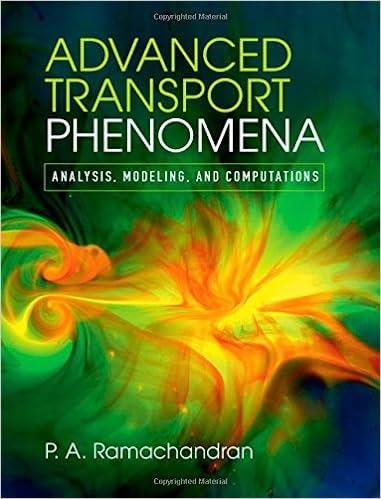Consider the three-component system consisting of acetaldehyde (1), hydrogen (2), and ethanol (3). The binary diffusivity values
Question:
Consider the three-component system consisting of acetaldehyde (1), hydrogen (2), and ethanol (3). The binary diffusivity values at \(548 \mathrm{~K}\) and \(101.3 \mathrm{kPa}\) are given in Example 21.3.
Find the \(K\) matrix at the bulk gas composition and at the catalyst surface concentration. Use ethanol as the component eliminated (the solvent). Comment on the values and the extent of multicomponent interactions.
Example 21.3:
Vapor-phase dehydrogenation of ethanol (designated as A or 1) to produce acetaldehyde (2) and hydrogen (3) was studied by Froment, Bischoff, and de Wilde (2011), and is an example of the above type of system where a heterogeneous catalytic reaction takes place on a surface, ethanol→acetaldehyde + hydrogen
The kinetics of the heterogeneous reaction was modeled as follows.
The rate is −ksyA, with ks equal to 10.0mol/(m2 · s).
The bulk gas-phase concentrations were y1 = 0.6, y2 = 0.2, and y3 = 0.2.
Find the rate of reaction, assuming a mass-transfer film thickness of 1 mm. The
temperature is 548 K and the pressure 101.3 kPa.
The binary diffusion coefficients are
D12 = 7.2 × 10−5 m2/s
D13 = 23.0 × 10−5 m2/s
D23 = 23.0 × 10−5 m2/s
Step by Step Answer:

Advanced Transport Phenomena Analysis Modeling And Computations
ISBN: 9780521762618
1st Edition
Authors: P. A. Ramachandran





